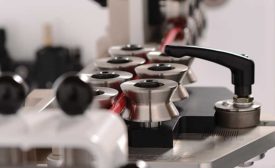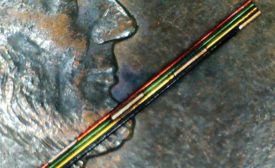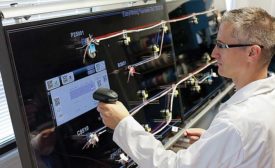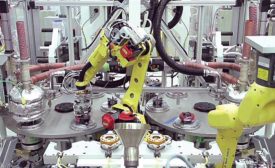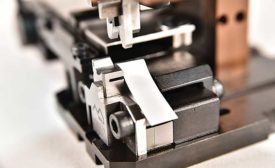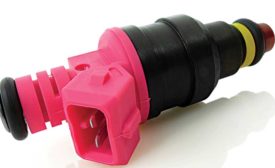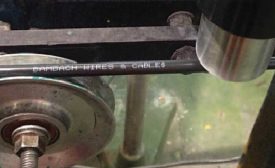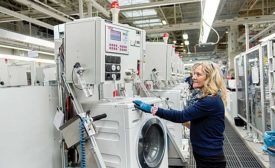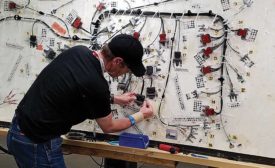Wire Processing Assembly
Lasers, wireless communication and other features optimize the performance of today’s wire cutting and stripping machines
Read More
Laser Wire Stripping for Medical Device Assembly
Small wires in medical devices can be safely stripped with lasers
May 1, 2018
Harness Assembly Goes Digital
A new, interactive harness assembly board promises to prevent errors and improve productivity.
April 16, 2018
Robotic System Assembles Cords
A unique multistation automated assembly system produces six different cord sets.
April 13, 2018
Low-Pressure Molding Controls Stress on Wire Assemblies
Hot-melt molding is the quick and efficient way to encapsulate and protect electrical components.
April 13, 2018
Best Practices in Crimp Applicator Maintenance
Schleuniger recommends preventative maintenance and proper setup to ensure crimp quality
April 11, 2018
Sealing Crimped Contacts Avoids Corrosion
Miele uses a dual-curing adhesive to seal electrical contacts in its washing machine motors.
January 16, 2018
Quality Is Top Priority When Assembling Wire Harnesses for Medical Devices
Successful contract manufacturers focus first on quality when making wire harnesses and cable assemblies for medical devices.
January 15, 2018
Never miss the latest news and trends driving the manufacturing industry
Stay in the know on the latest assembly trends.
JOIN TODAY!Copyright ©2024. All Rights Reserved BNP Media.
Design, CMS, Hosting & Web Development :: ePublishing
